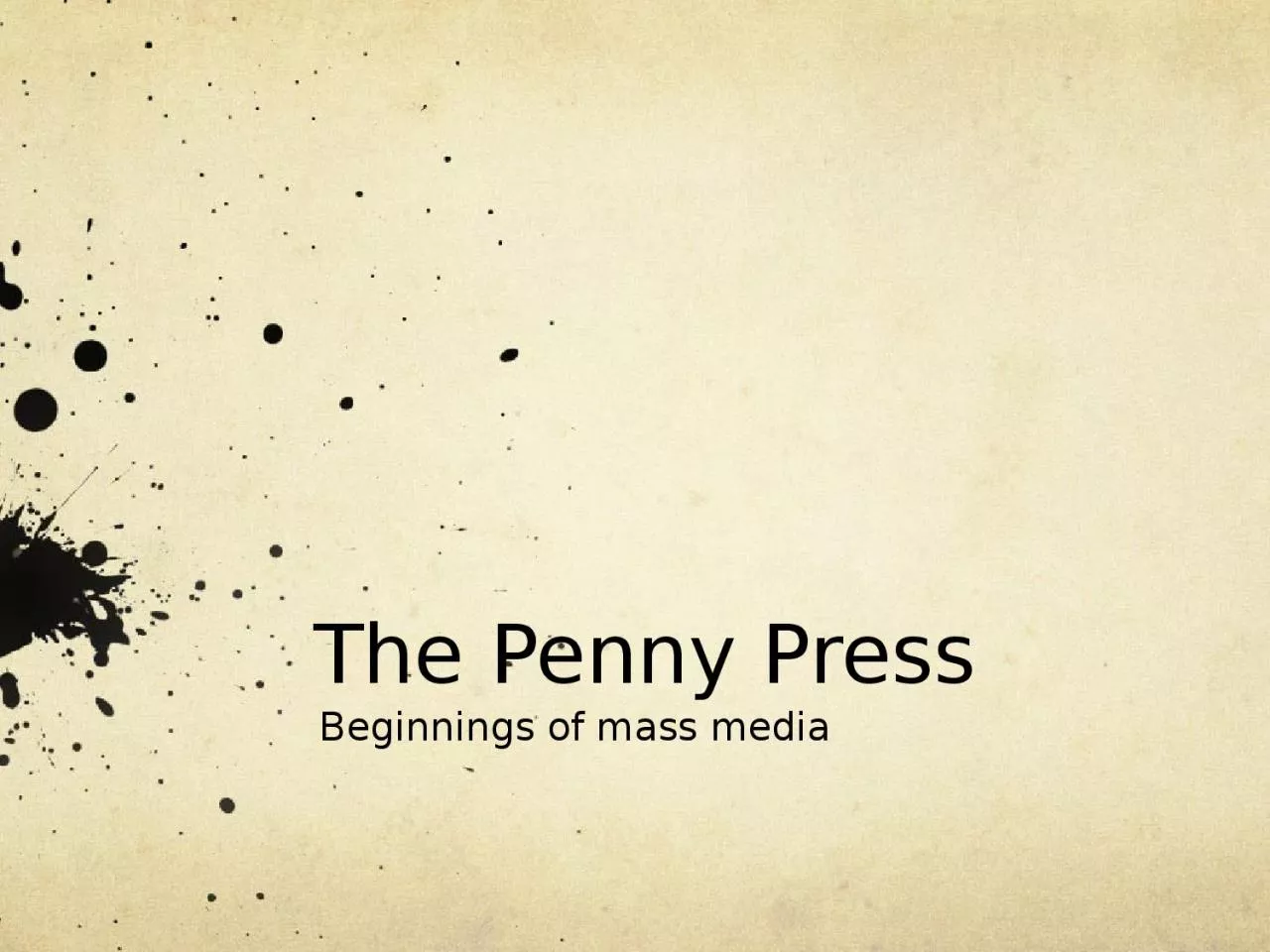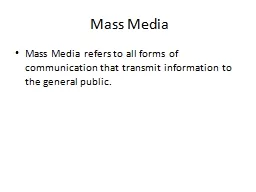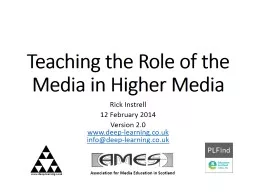PPT-The Penny Press Beginnings of mass media
Author : caitlin | Published Date : 2023-09-24
Elite vs masses Mass media in the United States tended to separate into streams by the late 1800s On the one side you had the sober press for a more elite audience
Presentation Embed Code
Download Presentation
Download Presentation The PPT/PDF document "The Penny Press Beginnings of mass media" is the property of its rightful owner. Permission is granted to download and print the materials on this website for personal, non-commercial use only, and to display it on your personal computer provided you do not modify the materials and that you retain all copyright notices contained in the materials. By downloading content from our website, you accept the terms of this agreement.
The Penny Press Beginnings of mass media: Transcript
Download Rules Of Document
"The Penny Press Beginnings of mass media"The content belongs to its owner. You may download and print it for personal use, without modification, and keep all copyright notices. By downloading, you agree to these terms.
Related Documents














